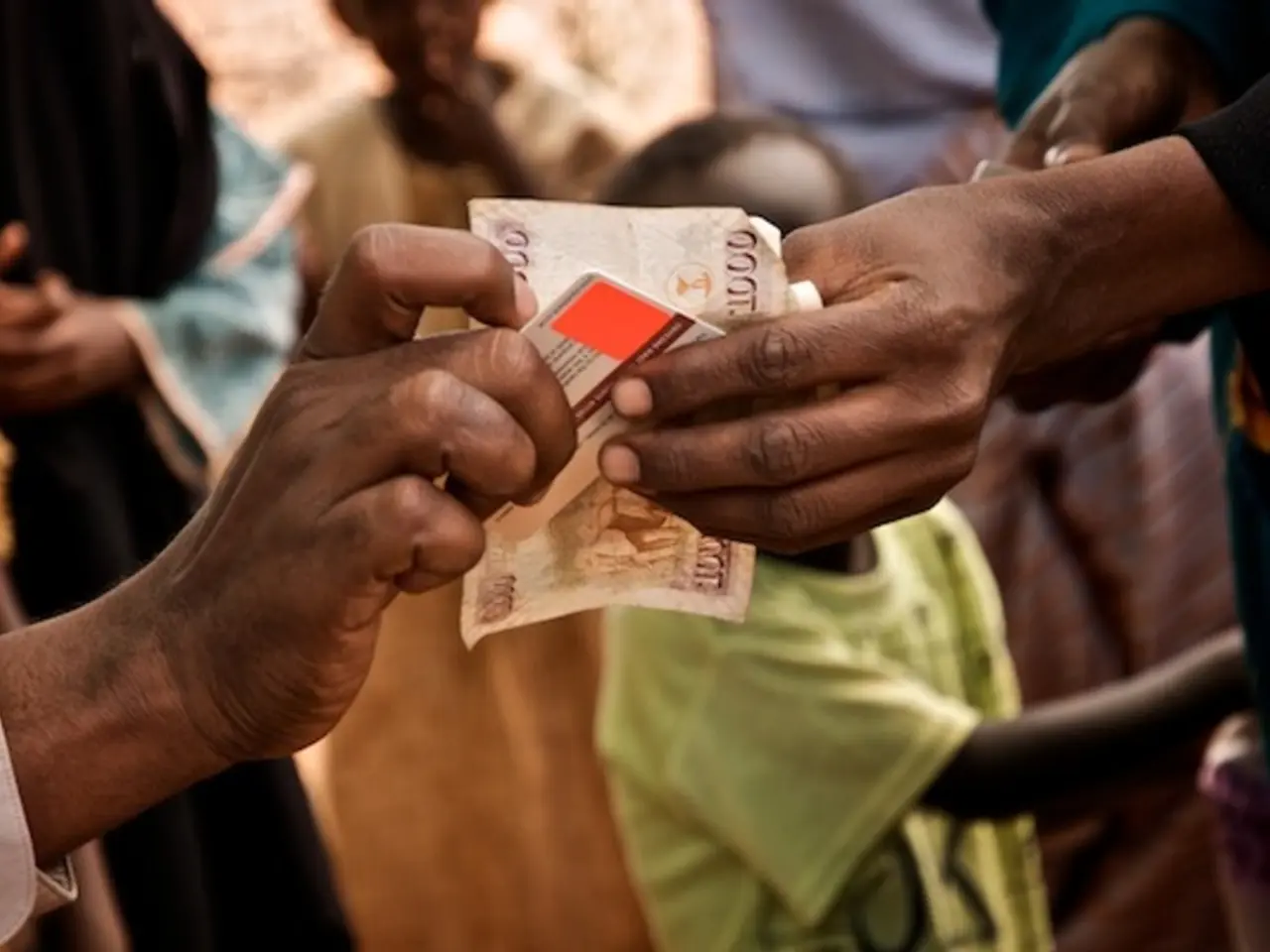Cryptocurrency enthusiasts anticipate a potential 60x increase in value for a token currently worth $0.035, while XRP bulls aim for a price reaching $6.5.
In the ever-evolving world of decentralized finance (DeFi), Mutuum Finance (MUTM) is making waves with its unique dual lending system. This innovative platform, currently in Phase 6 of its presale, has already raised an impressive $14.25 million and is gearing up for its upcoming beta launch.
Mutuum Finance offers two distinct modes: Peer-to-Contract (P2C) and Peer-to-Peer (P2P) lending. The P2C system allows users to borrow stablecoins against blue-chip assets like Ethereum (ETH) or Cardano (ADA) with loan-to-value (LTV) ratios around 65%. On the other hand, the P2P channel supports flexible, negotiated loan agreements using more volatile tokens like Shiba Inu (SHIB) or Dogecoin (DOGE). This dual approach caters to diverse market needs, fostering broader adoption.
Lenders in the P2C system can expect returns ranging from 8% to 10% Annual Percentage Yield (APY), while risk-tolerant users seeking higher yields and customizable terms can find what they need in the P2P lending model. This versatility sets Mutuum Finance apart from traditional DeFi platforms.
Industry analysts forecast that by late 2026, MUTM's token will surge by 60X, driven by expanding adoption, platform utility, and stablecoin issuance. With over 15,000 holders and currently priced at $0.035, Mutuum Finance presents a compelling investment opportunity in a competitive crypto market.
MUTM stands out due to its upcoming decentralized, user-friendly lending system, technological upgrades, and major exchange listings, including Binance, KuCoin, Coinbase, and Kraken. The project's clear roadmap shows upcoming milestones such as stablecoin integration, reinforcing investor confidence in Mutuum Finance's capacity to deliver on its promises.
In contrast, XRP operates on a more centralized model, with momentum driven largely by institutional partnerships and regulatory developments. XRP does not provide a decentralized dual lending service like Mutuum Finance and primarily targets institutional usage rather than catering to a broad decentralized lending ecosystem.
Key differences between MUTM’s dual lending system and XRP’s model are outlined below:
| Aspect | Mutuum Finance (MUTM) | XRP | |-------------------------|--------------------------------------------------------|------------------------------------| | Lending Model | Dual lending: Peer-to-Contract (P2C) + Peer-to-Peer (P2P) | Centralized model, no dual lending | | Decentralization | Decentralized DeFi platform | Centralized with institutional focus | | Asset Exposure | Maintains asset exposure while borrowing | No equivalent lending/liquidity option | | Target Users | Both risk-averse and risk-seeking individual investors | Primarily institutional partnerships | | Flexibility | Customizable loan terms in P2P, stablecoin borrowing in P2C | Less flexible, centralized control |
As Mutuum Finance moves forward, it is poised to disrupt the DeFi landscape with its versatile, decentralized lending environment, contrasting XRP’s centralized, institutionally focused model.
For more information about Mutuum Finance (MUTM), visit the links provided: Website: https://www.mutuum.com, Linktree: https://linktr.ee/mutuumfinance
- Mutuum Finance's unique dual lending system, which includes Peer-to-Contract (P2C) and Peer-to-Peer (P2P) lending, presents an exciting opportunity for investors in the technology sector, as it caters to diverse market needs, fostering broader adoption in the ever-evolving world of finance and investing.
- In contrast, XRP operates on a more centralized model, focusing on institutional partnerships and regulatory developments, offering less flexibility and customization compared to Mutuum Finance's decentralized, dual lending approach, thus presenting a marked difference in their finance and technology models.




